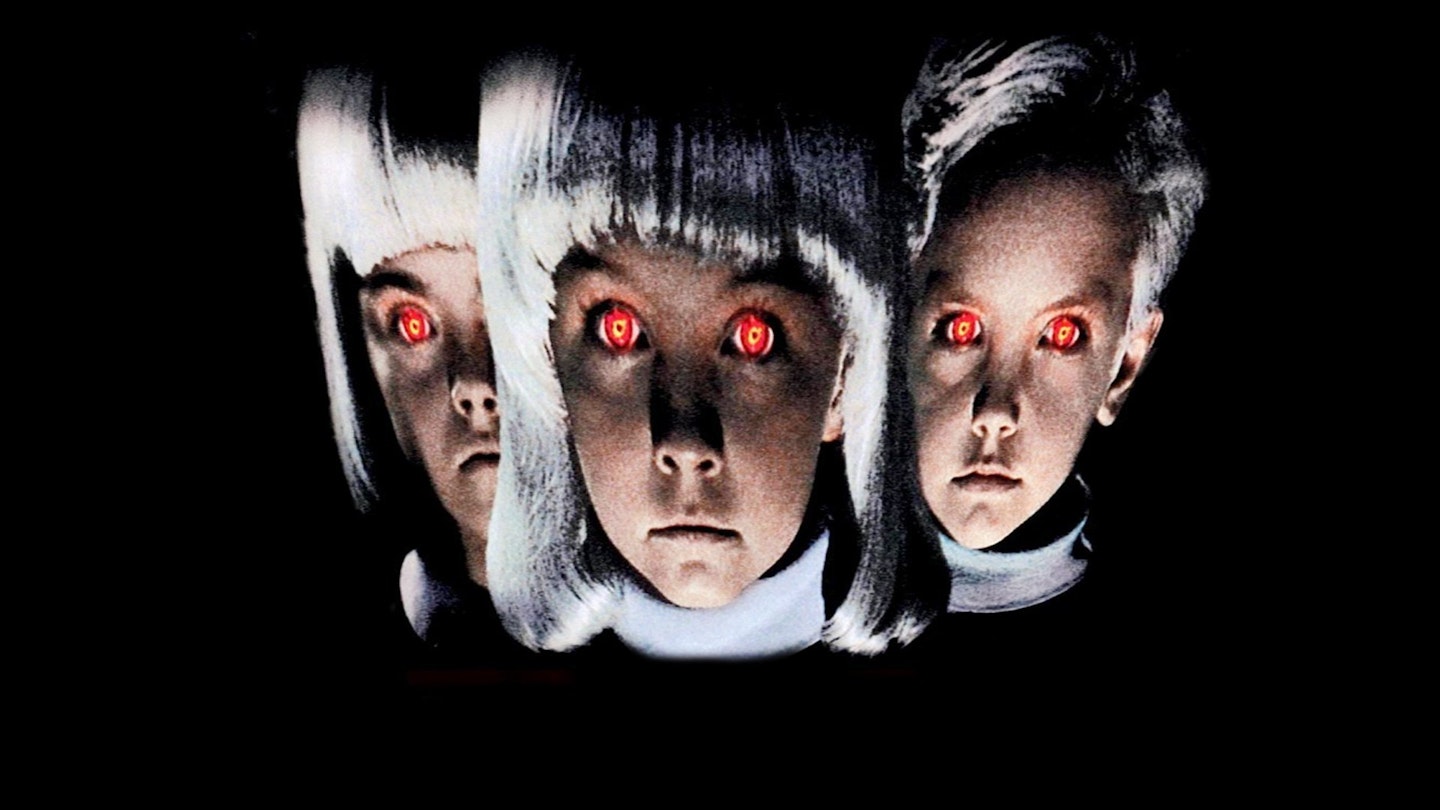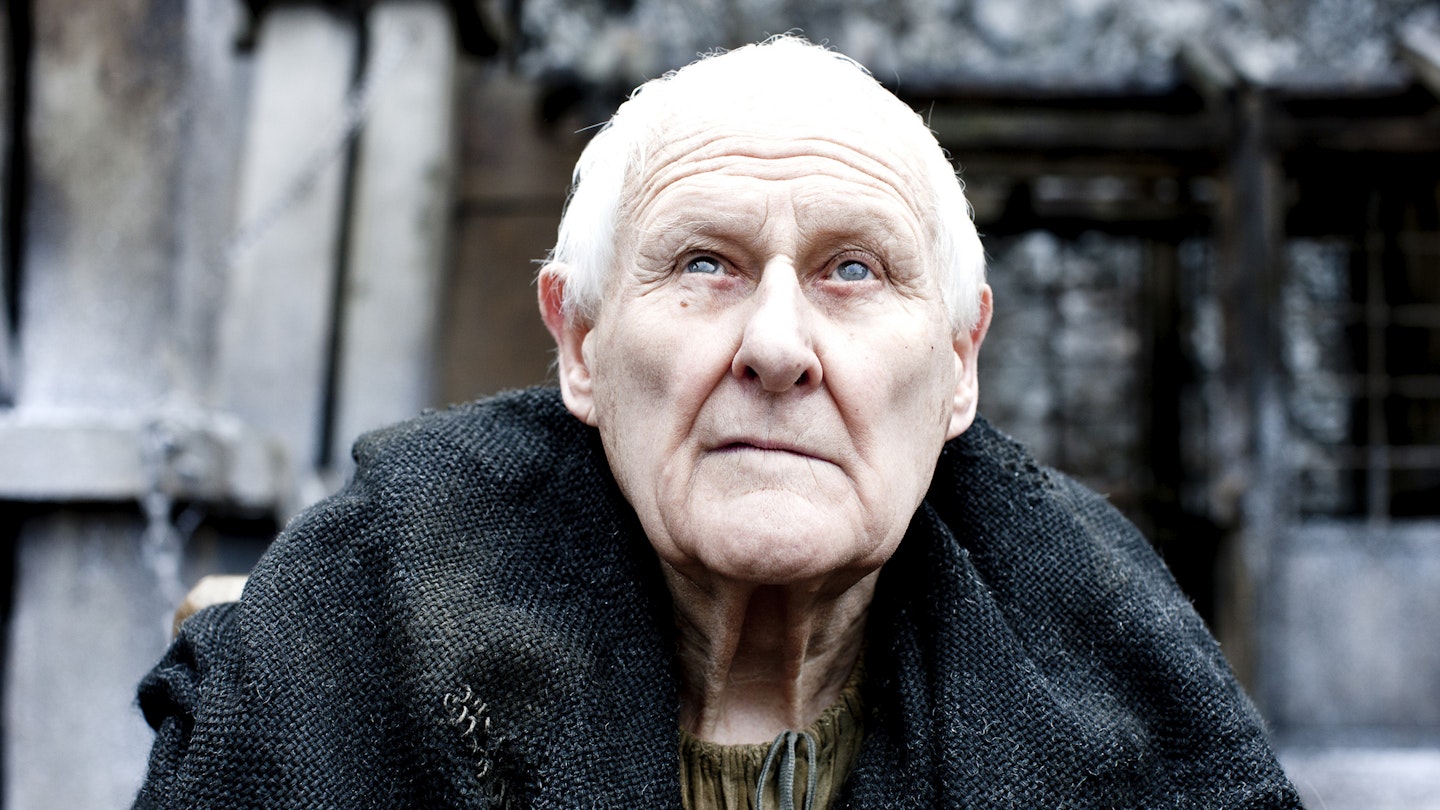Ever since The War Of The Worlds (courtesy of H.G. Wells, not Cruise/Spielberg), the most reworked sub-genre of science fiction has been the invasion from outer space. In the 50s and 60s, any number of things came from other worlds to cause trouble on Earth — flying saucers, lone monsters on the rampage, body-snatching duplicates, humanoids with super-powers, giant disembodied brains, Daleks, intellectual carrots and Jerry Lewis.
Brit novelist John Wyndham came up with an original invasion in his novel The Midwich Cuckoos (1957), in which the inhabitants of a small village all fall mysteriously asleep for a spell one morning and find when they wake up that all the women of child-bearing age are pregnant. When born, the children are at least half-alien; they are in telepathic contact with each other, and display maturing powers to influence and dominate ordinary folk, which forces the authorities to consider the uncomfortable notion of mass infanticide before the scary alien kids grow up and wipe out humankind.
Wolf Rilla's 1960 film, from a script by the American Stirling Silliphant (who uses a few incongrous Yank expressions — "general store" for "village shop"), is a low-key dramatisation of the Wyndham novel that could, perhaps, have done with another ten minutes running time. The first half of this brief picture deals with the Midwich blackout and the pregnancies, so the business with the children — which takes place over years of plot-time — often seems a little rushed, especially since there are a lot of secondary characters to cope with and the splendid Barbara Shelley (the most caring of the mothers) gets pushed into the background so her scientist husband (George Sanders) can shoulder the dramatic weight.
Nevertheless, . It was such a sleeper success that a semi-sequel (Children Of The Damned) was made, and John Carpenter did a hash-job remake in 1995. His evil kids live in '90s California but still wear '60-vintage English school uniforms (and, though the remake is in colour, grey uniforms at that). The sleeping village set-up is classic Quatermass stuff. We see a tractor grinding around in a circle, an iron burning a hole in a dress, a record stuck in a groove, a cow collapsed in a field, a bus in a ditch and other vignettes, while boffin Gordon Zellaby (Sanders) and other interested parties — the army, a local GP, a bicycling bobby — test the limits of the phenomenon.
They rule out poison gas because the boundaries of the sleep zone are too sharp. A plane tries to fly over Midwich and crashes — in the novel, the pilot sees a flying saucer but the film eschews such trickery and leaves us to assume it's all been managed by a Species-like signal from outer space — and then everyone wakes up in convincing embarrassment, which gets odder as the pregnancies are announced. Here you get the sort of emotions American science fiction films, pitched at kiddies, just didn't do in the 50s and 60s: the awkward joy of the Zellabys (Sanders is much older than co-star Shelley) at an unexpected event; the meek terror of the teenage virgin confessing to a doctor; the rage of the sailor home after a year abroad to find his wife knocked up; the quiet solidarity of a pregnant mother and daughter who visit the clinic at the same time.
Once the kids are born, the film becomes a more conventional monster movie in which the threat is a malignant higher intelligence with no moral grounding. Here, what works is the shape the threat comes in: the Midwich children are the creepiest ever seen on film, with their identical blonde wigs (an unsettling effect is achieved by casting real-life brunette kids whose colouring is subtly wrong for their hair) and staring eyes (in some prints, a glowing effect was added). The polite spokesman for the group "mind" is David, the Zellabys' son, played by Martin Stephens (also notable as Miles in The Innocents) but dubbed by a grown woman (it used to be a wireless convention to have actresses play children). Rilla hints at the children's human sides (they all solve a puzzle box to get chocolates) as well as a malevolence that would be scary in an alien but just might be even scarier from a human kid (Stephen's ghost of a smile after he forces a motorist to kill himself remains one of the nastiest shots in British cinema).
The plot gets out of hand rapidly, with rampaging mobs and committees of dignitaries debating the situation — we learn there were other villages in the frozen North (the Eskimos killed the blonde babies at birth) and Russia (the Soviets nuked the whole place) — but there's a great suspense finale as Zellaby, convinced that the children have to be destroyed, carries a bomb in his briefcase into the schoolroom and tries to think of a brick wall as the kids attempt to read his mind (we see the wall crumbling, a very effective depiction of a mental process), blocking them out until the disappointingly meagre explosion.
In true spread-the-unease fashion, the film ends with one of the first it-may-not-be-over endings (later to become a genre cliche): the glowing eyes of the children, superimposed over the fire, zap off into the skies, suggesting that killing the kids' bodies may not have wiped out their disembodied intelligence.

